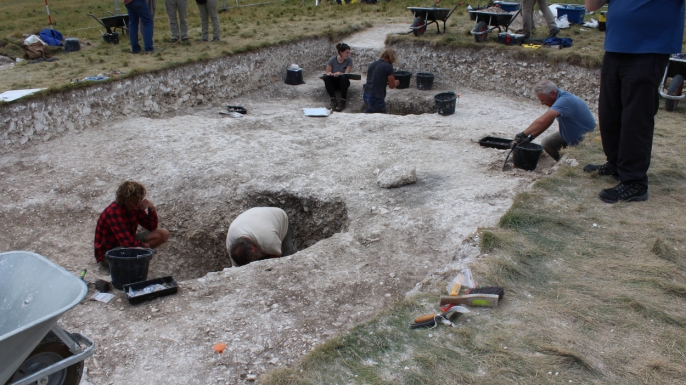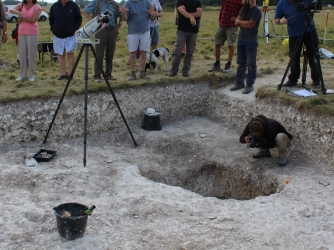Archaeologists have found what is considered a new monument that dwarfs Stonehenge. Now being referred to as “Superhenge,” archaeologists were able to discover this massive monument through underground mapping. However, “Superhenge” isn’t the only surprise that has been revealed.

Photo: History
Last September, a group of scientists discovered an enormous secret lying just northeast of Stonehenge. The secret? A massive monument that might be five times bigger than the already huge Stonehenge. During their ground-penetrating radar scan, the Stonehenge Hidden Landscape Project received heavy signals in the area near Stonehenge. The archaeologists were then able to determine that there were more than 100 stone monoliths just two miles away from famous landmark, situated underneath Durrington Walls. Experts now believe that these monoliths were once the settlement of the Neolithic settlers that built Stonehenge.
This past month, archaeologists were finally able to break ground on the new site. However, during their research, the team found a much bigger surprise than they were anticipating. Once they started digging, the team realized that the detected anomalies weren’t buried stones. Instead, the anomalies were actually a series of five foot deep holes that were then filled with blocks of chalk. Archaeologists have also uncovered ramps near the holes that they believe were used to help secure poles into the pits.

Photo: History
Dr. Nick Snashall, one of Britain’s National Trust archaeologists, comments that “We found voids filled with infill material showing where the posts had stood and also marks on the chalk, part of the natural geology on the site, at the base of the post holes that showed where they had been twisted in order to loosen them when they were removed.”
Some of these poles reach up to 20 feet tall. Experts believe that they were once part of a large timber monument that would have been built 4,500 years ago. Historians believe that this monument was built as a memorial for the Stonehenge builders after they’d abandoned Durrington Walls. Archaeologists have determined that these poles had been lifted out of their holes vertically. The wooden monument was then replaced with a bank of dirt which measures to have a mile long circumference.

Photo: History
Historians believe that these pagan settlers also built a wooden structure that replicated Stonehenge during their time at Durrington Walls. Snashall comments on the significance of the two completely different materials used for these monuments. “The significance of wood versus stone at this time is a matter of much debate among archaeologists. One of our project leads, Professor Mike Parker Pearson, is of the view that wood is connected with the living and stone with the dead or ancestors. That would make sense in this context as immediately before the putting up of the timber posts this site had been an enormous settlement – the evidence suggests for the builders of Stonehenge. Of course individual timber posts may have been carved or painted and served as totem poles or told the stories of individuals, ancestors or gods. The careful removal of these posts may have been to enable their use in another monument nearby and/or because of the significance of individual posts.”
Archaeologists are now going to start analyzing the objects they’ve found during this dig. Experts plan to use radiocarbon in order to date the posts and establish more information on this mysterious settlement. Hopefully, experts will be able to determine how these posts where used and why. For now, all we can do is wait for more amazing information.

